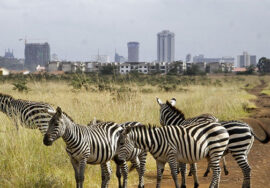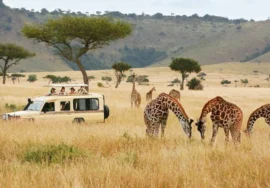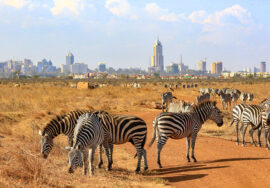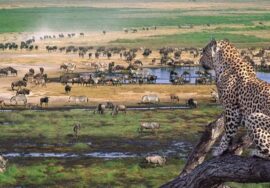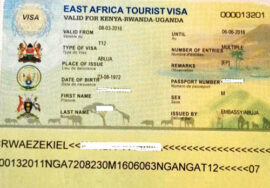
An Electronic Hunt for Lions & Rhinos
An Electronic Hunt for Lions & Rhinos
There are times when technology works surprisingly well in nature, making things better for the earth and animals. These are some of the newest tech advances in protecting our lions, cheetahs, and rhinos and managing big game.
Did you know that lions and rhinos can have small radio collars put on them? These clever gadgets keep track of when they come and go. With this information, rangers and conservationists can keep them safe from poachers, let herders know about them, and reduce the chances of a conflict between people and animals.
These gadgets not only help protect wildlife, but they also make your trip experience better. This could be a walking tour or a game drive in your 4×4 Jeep. Your guide is holding up an electronic locator to find a lion, leopard, cheetah, or rhino.
Now that you’ve found the animal and are slowly moving toward it, you can see the electronic tag running along its neck.
You are getting its beacon, and so is a monitoring station that is keeping an important record of where that animal is at all times, which is very important for its survival.
Helps Does Monitoring Work?
The number of lions and rhinos has gone down all over Africa. Twenty years ago, there were 200,000 big cats in the world. Now, there are only about 20,000. Loss of habitat, sickness, drought, and fights between animals and people have all played a part.
But now that there are monitoring systems, wildlife conservationists know more about how animals move and can be notified when a new cub is born or an older animal dies. There is less conflict between people, and people are more aware of the dangers in the world.
Big cats will sometimes leave the safety of national parks and conservancies to go where they want to go. They might get lost and end up in places with people or animals, which is when they are most at risk. People can be warned to give stray animals a large area of safety by letting guards know when they are moving.
From just 11 adults, the number of lions in the Ewaso area in northern Kenya has grown thanks to careful tracking.
A collar that’s big enough for a lion or rhino
Because these radio collars are so light—about 1% of the animal’s weight—they don’t get in the way of their ability to hunt or move regularly.
The animal is put to sleep with a tranquilizer dart by a vet, and the collar is then put on. It starts sending out messages that tell other devices where the animal is. Later, if needed, the collar can be dropped from afar with just a radio signal.
The collar’s signal can now be sent and picked up by local receivers or even by satellite. It is then sent to monitoring stations where the animal’s movements can be watched, often in real time.
Your safari guide can also pick up on these animal-based signs to help you get closer to this beautiful wildlife.
Take a tracking trip.
For an electronic tracking tour, private conservancies are usually the best places to go because they have the most tools. The Ol Kinyei Conservancy is right next to the Masai Mara and is home to the Mara Predator Conservation Program, which keeps an eye on the animals.
In the Mugie Conservancy, which is north of Nairobi, you can see lionesses from a number of different groups.
The Sera Community Conservancy also keeps an eye on tagged rhinos in northern Kenya. You’ll start in your Jeep and use technology to find a rhino. Then you’ll quietly walk up to the animal and get a great look at it.
Does this sound like a fun way to go on Safari? Get in touch with us, and we’ll take care of everything to get you out on an exciting electronic tour.

